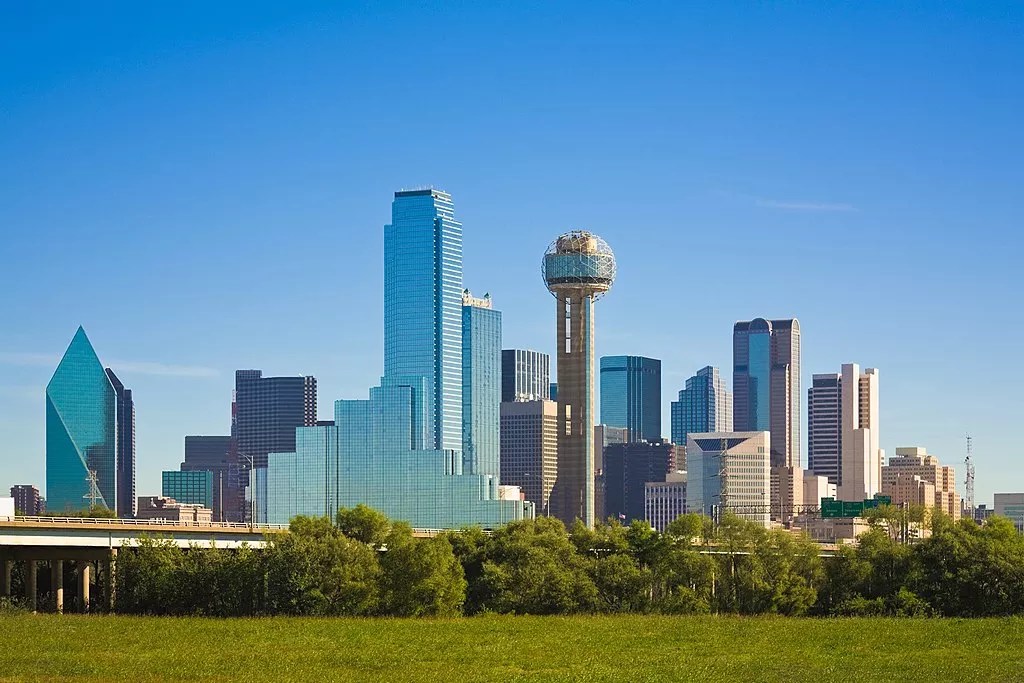
Alan Botting, CC BY-SA 2.0, via Wikimedia Commons

Audio By Carbonatix
ChatGPT, the revolutionary chatbot that’s evoking alarm and wonder in near-equal measure, has some interesting thoughts about what’s been plaguing Dallas.
For those of you who haven’t yet acquainted yourselves with the technology, ChatGPT works like so: You ask it a question or feed it directions – like, for example, a prompt from a school assignment – and it’ll respond it faster than you can say “Steve Jobs.”
Really. It’s kind of nuts.
Since ChatGPT apparently holds the keys to all the knowledge of the interwebs, we wanted to pick its brain about our fair city. Or, more specifically, we decided to ask: What are five of Dallas’ biggest problems?
We’re thankful for you. Are you thankful for us?
We feel thankful for our staff and for the privilege of fulfilling our mission to be an unparalleled source of information and insight in Dallas. We’re aiming to raise $30,000 by December 31, so we can continue covering what matters most to this community.
Help us continue giving back to Dallas.
Right out of the gate, ChatGPT informed us that its replies were based on data from up until September 2021. Some of the issues have probably since shifted or evolved, the AI said.
So, with that out of the way, here’s what the technology had to say.
1. “Crime and Public Safety: Dallas has had ongoing concerns about crime rates, including violent crime and property crime. Efforts to improve public safety and community policing were being discussed and implemented.”
We’d guess that Mayor Eric Johnson would probably have a strong opinion on this one.
Back in June, Johnson was lauded in a Washington Post op-ed that highlighted his efforts to crack down on the city’s violent crime.
Still, some local outlets have applied a more nuanced approach to the safest-city-in-the-U.S. narrative. Although we have seen a drop in homicides since adopting a violent crime plan in 2021, Dallas is also home to a “higher murder rate than Los Angeles, New York City, Fort Worth, and Miami,” D Magazine reported in April.
2. “Education: The quality of education in some Dallas schools, particularly in low-income neighborhoods, was a concern. Efforts were being made to improve educational outcomes and reduce achievement gaps.”
The Observer reported in December 2018 that Dallas’ Hispanic and Black students were more likely to receive lower grades, worse punishment and fewer opportunities compared with their white peers.
One report from that year found that the county’s Hispanic, Black and multiracial high school students were also less likely than their white and Asian counterparts to graduate on time.
Dallas ISD has made some solid advancements in certain areas, though. Last month, a post on the district’s website touted improvements in closing the academic achievement gap, stating that students had made “positive gains” and that more are now “on grade level.”
3. “Transportation and Traffic Congestion: Dallas faced traffic congestion and limited public transportation options. Expanding public transportation infrastructure and addressing traffic issues were ongoing challenges.”
Traffic in Dallas truly does suck, and the city’s drivers aren’t great either.
Last year, Big D took home the gold in a ranking of the top 10 most dangerous cities for driving, curated by the RV rental website Outdoorsy. And we placed No. 14 when it comes to U.S. cities with the most traffic congestion, according to the data company INRIX.
Luckily, Dallas is making some strides in terms of public transportation. The Observer reported last month on a pilot program that will offer free DART rides to Dallas students come January, which may also help to reduce school-hour traffic.
4. “Economic Disparities: There were significant economic disparities in Dallas, with pockets of poverty and limited access to economic opportunities for some residents. Efforts to promote economic development and job creation in underserved areas were being pursued.”
In January 2022, Axios reported that the mayor was working to mitigate the city’s racial disparities in income. White people in the area are more likely to have graduated from college than their Hispanic and Black counterparts, further exacerbating the wage gap.
A Johnson-commissioned report from November 2021 found that while 54% of white workers held “family-sustaining wage” jobs, the same was true for just 16% of Hispanic workers and 15% of Black workers.
The mayor also appointed a workforce czar last year to help reduce inequities among the city’s labor force.
5. “Housing Affordability: Dallas, like many other major cities, faced challenges related to housing affordability. Rising home prices and rents were making it difficult for some residents to find affordable housing.”
The terms “Dallas” and “affordable housing” don’t exactly gel. In a May cover story, the Observer highlighted the struggles of local residents scrambling to secure housing in a city with increasingly pricey rents.
That same month, the website RealtyHop came out with a list indicating a fall in Dallas’ affordability. The city comes in 23rd on a ranking of the least affordable housing markets.
CBS News Texas reported in June that renting in North Texas has recently “become just as competitive and expensive as a home, if not more so.”
Guess it’s time to consult ChatGPT for advice on investing in crypto and stocks.